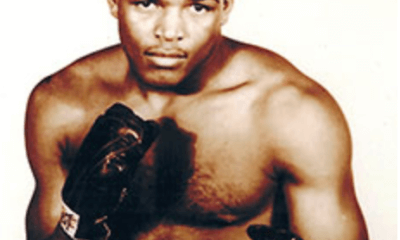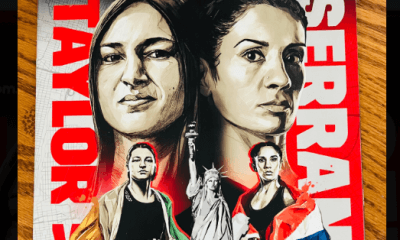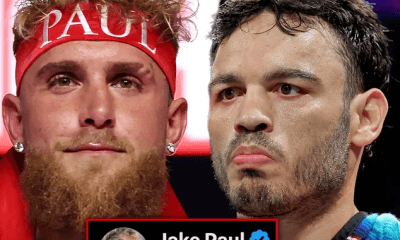Featured Articles
Looking Back at Willie Pep Through the Keyhole of a Stormy Night in the Orange Bowl
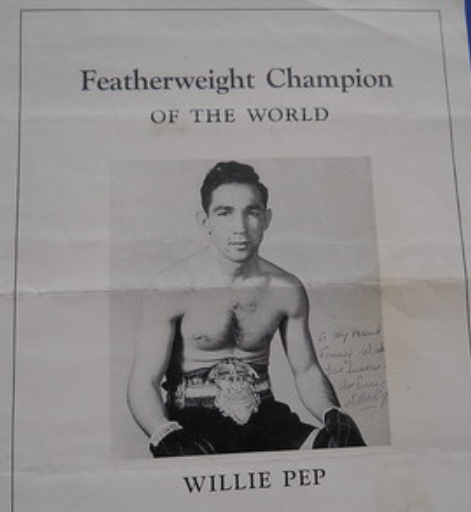
The Orange Bowl in Miami, Florida, was built to house college football games, notably the post-season game that shares the name of the stadium. In 1982 it was the site of a storied fight, the first meeting between Aaron Pryor and Alexis Arguello.
The attendance, 23,800, didn’t quite measure up to the promoters’ expectations, but the event was a success, both commercially and artistically. The same could not be said of the previous title fight staged here, the Feb. 24, 1948 meeting between featherweight champion Willie Pep and Humberto Sierra. From an organizational standpoint, professional boxing, more so than any other sport, is bedeviled by Murphy’s Law: whatever can go wrong, will go wrong. And here was another classic example.
—
Willie Pep, born Guglielmo Papaleo to Italian immigrants in Middletown, Connecticut, ranks third on many all-time pound-for-pound lists, trailing only Sugar Ray Robinson and Henry Armstrong. His career arc bears an uncanny resemblance to the original Sugar Ray.
Heading into his Orange Bowl match with Humberto Sierra, Pep sported a record of 122-1-1 and was riding a 61-fight winning streak. His only defeat had come against a bigger man, Sammy Angott, a former world lightweight champion. Making his won-loss record more astounding, 14 of those 122 wins came after Pep was seriously injured in a plane crash. He suffered a broken leg and two chipped vertebrae in the crash of a DC-3 airliner in which three people were killed.
In 1948, Willie Pep was the unified featherweight champion, having knocked out Sal Bartolo to win the National Boxing Association diadem after previously holding the New York version of the title. He and Humberto Sierra had fought once before. On July 23, 1947, on Pep’s turf in Hartford, Pep boxed Sierra’s ears off, winning a 10-round decision. But then Sierra went and pulled a shocker, upsetting top-rated Sandy Saddler in Minneapolis, leapfrogging Saddler in the pecking order.
Supposedly 23 years old, two years younger than Pep, Sierra was born in Havana but had taken up residence in Miami where a young boxing promoter from the Northeast, Chris Dundee, had established a beachhead. He was tall for the weight class; at five-foot-nine he was four inches taller than Pep.
The promoter of the event was Clarence “Kay” Kantrowitz who hailed from Hartford where Willie Pep made his home. In the Hartford papers, Kantrowitz was identified as a film distributor, operator of a midget auto track, and a behind-the-scenes political operator.
Kantrowitz had never promoted a boxing match before, but on paper he had good instincts. Miami was a sporting town during the winter racing season when the Miami Beach hotels were crawling with wiseguys. The fight was potted between the two richest races of the Hialeah meet, the Widener Handicap and the Flamingo Stakes, at a time when horseracing was poised to surpass baseball as America’s leading spectator sport. The locals were expected to rally behind Sierra and it undoubtedly wasn’t lost on Kantrowitz that the Orange Bowl was situated in the Little Havana section of Miami.
Staging a boxing event in an outdoor arena is always risky because of the possibility of adverse weather. The days preceding the fight were sunny, seemingly a good omen, but as folks in south Florida will tell you, the weather down here can change on a dime.
The sky turned gray in the late afternoon and a light drizzle began falling as folks entered the arena. The drizzle turned into a hard shower during the semi-windup, a match between heavyweights Ollie Tandberg and Walter Hafer. In the fourth round of this contest, a 10-round snoozer, there was an unscheduled intermission when the flash bulb on a photographer’s camera exploded sending shards of glass into the ring. That was the only memorable moment.
During the Pep-Sierra fight, there were times when the hard shower was something more; a torrential downpour. In an action scene that ran in many newspapers, one can see a ringsider crouching under a chair that he had turned upside-down to serve as a makeshift umbrella.
Pep took control of the fight early, knocking Sierra to the canvas in the second round. Sierra wasn’t badly hurt – he was up in a jiff – but he was on the canvas again in round nine, compliments of a clean left hook, and saved by the bell later in the round when Pep caught him against the ropes with a vicious right uppercut. Sierra tottered back to his corner and the fight ended 22 seconds into the next frame when Pep knocked him down again with a scorching right hook. Referee Jack Dempsey (yes, that Jack Dempsey) waived it off without starting a count as Pep sloshed to a neutral corner.
During the previous year, the Orange Bowl was expanded to 58,750. Pep-Sierra II drew an announced crowd of 7,757. (One guesses that the crowd would have been somewhat larger if Miami’s darker-skinned citizens were free to sit where they pleased, but this was the Deep South and blacks were confined to a separate section of the grandstand.)
Clarence Kantrowitz reportedly needed $93,000 to break even. With no TV (there were very few sets in use), the fight generated little auxiliary income save for a stipend from the radio station in Hartford that carried the fight using local on-air talent. In a nutshell, the first-time promoter lost his shirt and he wouldn’t be the only one left out to dry. As widely reported, whatever money he earned after expenses would be donated to the Damon Runyon Memorial Cancer Fund.
Kantrowitz actually did write a check to the charity in the amount of $3,250 (10 percent of Pep’s guaranteed purse), but the check, said New York Daily Mirror sports editor Dan Parker, the treasurer of the fund, “bounced higher than a kid’s kite on a windy day.”
Willie Pep lost his title later that year to four-time rival Sandy Saddler, regained it from Saddler in 1949 with a brilliant display of boxing, only to lose it again to Saddler in 1950 when he retired on his stool after seven rounds with a dislocated shoulder in a fight that he was winning. In retirement, Pep stayed in the game as a referee and a deputy boxing inspector for the state of Connecticut. Humberto Sierra returned to Havana and died in obscurity. Heading into his title fight with Pep, the Miami papers listed his record as 75-3. Boxrec tells a different tale. It shows that Sierra was stopped eight times after his second encounter with Pep and left the sport with a record of 49-24-5. Clarence Kantrowitz suffered a fatal heart attack in 1961, passing away at age 57.
To comment on this story in the Fight Forum CLICK HERE
-

 Featured Articles4 weeks ago
Featured Articles4 weeks agoAvila Perspective, Chap. 330: Matchroom in New York plus the Latest on Canelo-Crawford
-
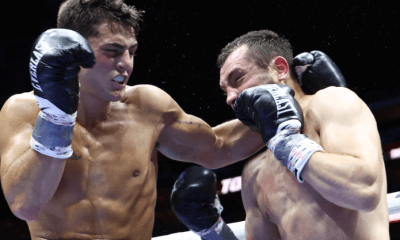
 Featured Articles3 weeks ago
Featured Articles3 weeks agoVito Mielnicki Jr Whitewashes Kamil Gardzielik Before the Home Folks in Newark
-
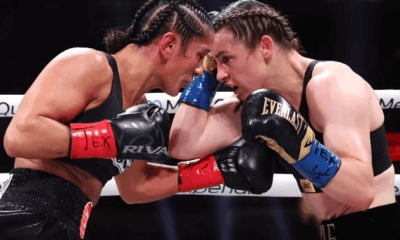
 Featured Articles21 hours ago
Featured Articles21 hours agoResults and Recaps from New York Where Taylor Edged Serrano Once Again
-
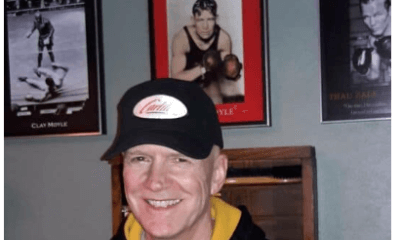
 Featured Articles4 weeks ago
Featured Articles4 weeks agoCatching Up with Clay Moyle Who Talks About His Massive Collection of Boxing Books
-
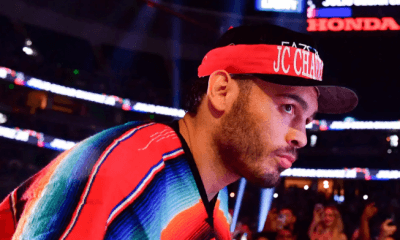
 Featured Articles5 days ago
Featured Articles5 days agoFrom a Sympathetic Figure to a Pariah: The Travails of Julio Cesar Chavez Jr
-
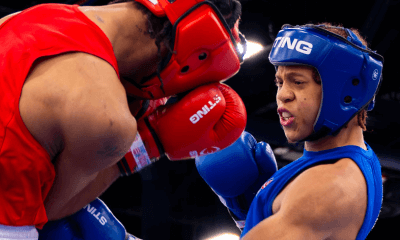
 Featured Articles3 weeks ago
Featured Articles3 weeks agoMore Medals for Hawaii’s Patricio Family at the USA Boxing Summer Festival
-
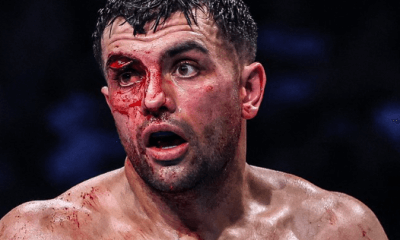
 Featured Articles1 week ago
Featured Articles1 week agoCatterall vs Eubank Ends Prematurely; Catterall Wins a Technical Decision
-
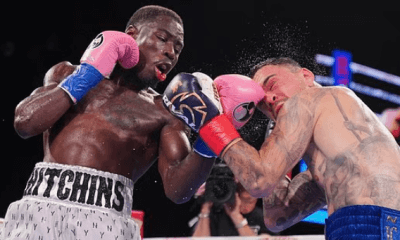
 Featured Articles4 weeks ago
Featured Articles4 weeks agoRichardson Hitchins Batters and Stops George Kambosos at Madison Square Garden

